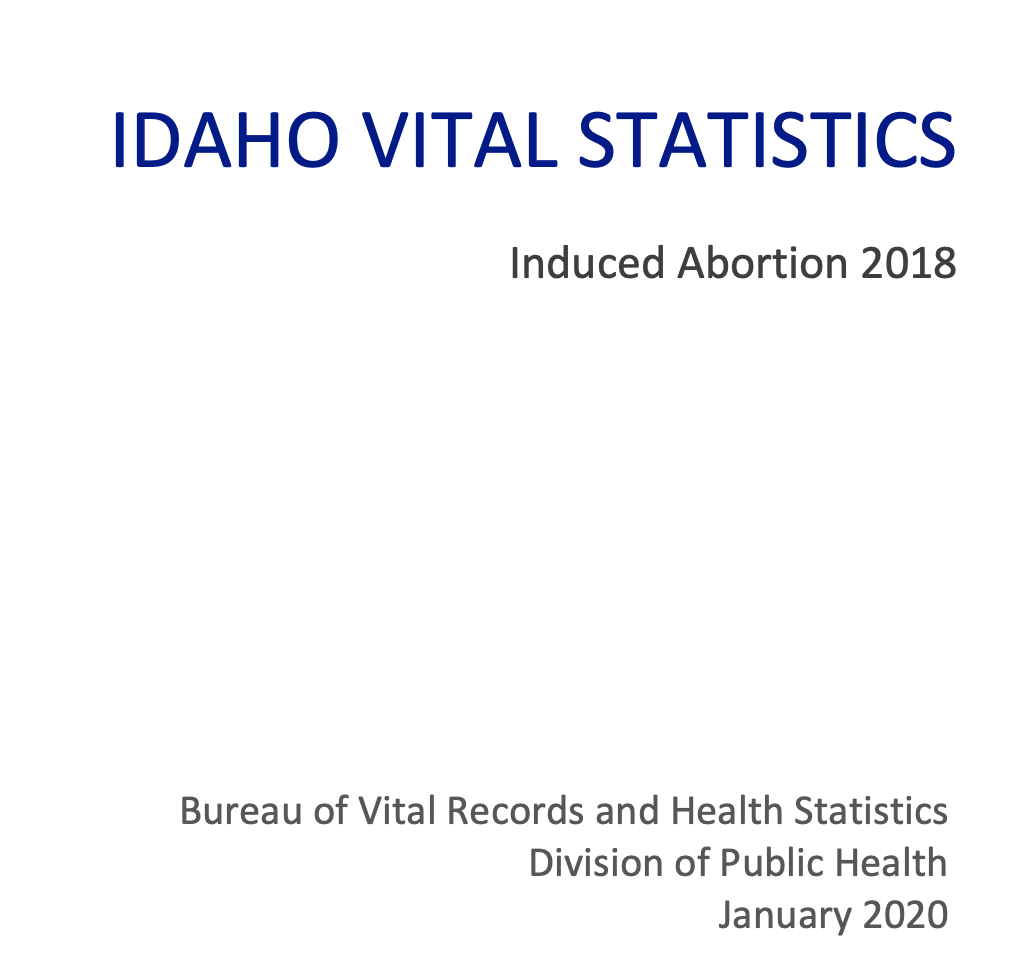
With the passing of Justice Ginsberg it looks like President Trump will have the fortune to appoint three Supreme Court justices in his first term. Such power might be just what his evangelical supporters hoped for when they excused his unsaintly behavior and voted for him. The hope to make abortion no longer a Constitutional protection, as the Roe v Wade decision did some 47 years ago, might be realized, and I can believe some folks are drooling.
One thing for sure, when abortion is criminalized like it was in many states back before Roe v Wade, it will be much harder to count. And if you care about something, you should count it.
Before abortion was “legalized” by the 1973 SCOTUS decision, there were few accurate numbers. In colonial times and after the revolution, most states modeled their laws after British common law. This prohibited abortions after “quickening”, or the first movements are felt by the mother, approximately 15-20 weeks gestation. Abortifacients were widely available. One estimate suggests 20-25% of pregnancies in the mid 19th century ended in abortion, but this is just a “best guess”. Nobody was counting.
It is interesting that the medical profession led the charge to criminalize abortion in the 19th century and into the 20th. By 1900, all states outlawed abortion. A cynic could say there were financial incentives, since most states that eventually did allow abortions required a physician to be the provider (as Idaho did in 2000).
Idaho held abortion to be a felony before 1973. In 1950 legislature passed a law that made any woman seeking or obtaining an abortion a criminal, as well as any person “abetting”.
But we sure keep good records of abortion now. Federal and state law require the collection and collation of such data. Idaho’s numbers can be looked at on the Vital Statistics website. I’d encourage you to look at the numbers. But maybe numbers don’t matter to you.
Idaho abortion rate has been steadily declining for the last 20 years or so. We have one of the lowest rates in the nation. Don’t think that’s because we aren’t counting them all. Idaho counts abortions performed on our residents in other states too. With only a couple clinics in Idaho, about a third are performed beyond our borders.
So, Idaho has many restrictions on access to and the rules around abortion, all sending a very clear message. But since it is still legal in this state, we can still count it.
I don’t think most abortion opponents want to count something they find morally, ethically, spiritually abhorrent. I can understand that feeling. But we count crimes, we count prisoners, we count deaths, we count child abuse. I doubt we will be able to count illegal abortions.
Counting helps us to manage our expensive, tragic societal problems. I’m an advocate for counting what’s important.
The numbers mattered in an interesting experiment done in Colorado in the past few years.
Colorado had a pretty high unplanned teen pregnancy rate. In 2008 an anonymous donor gave a chunk of change to the state to provide long acting, reversible contraceptives to teen women at no cost. Over the subsequent five years teen pregnancy rates dropped by 40%. And abortions dropped by 64%.
With a reversal of Roe v Wade abortion opponents might just get what they want. Then, it will be back to each state to decide.
A Pew poll from 2014 showed that 45% of Idahoans thought abortion should be legal in most cases; 49% thought it should be illegal in most cases. That’s a narrow margin.
There can be no doubt the direction the Idaho legislature would go. They even passed a law in 2020, saying, immediately upon a Supreme Court reversal of Roe v Wade, abortion becomes illegal in Idaho. They are drooling. And if the cards fall right, they might get what they want. Then we’ll stop counting.









